Date 7 days Total number of deaths 14 | Property damage A$100 million Location Brisbane | |
 | ||
Similar 2010–11 Queensland floods, Floods in Australia, 1956 Murray River flood, 1955 Hunter Valley flo, 2011 Thailand floods | ||
A flood of memories the brisbane floods of 1974
The 1974 Brisbane flood occurred in January 1974 in Brisbane, Queensland, Australia. It took place when the waterways in the city experienced significant flooding. The Brisbane River, which runs through the heart of the city, broke its banks and flooded the surrounding areas.
Contents
- A flood of memories the brisbane floods of 1974
- Flood waters in Brisbane
- Damage
- Fatalities
- Aftermath
- References
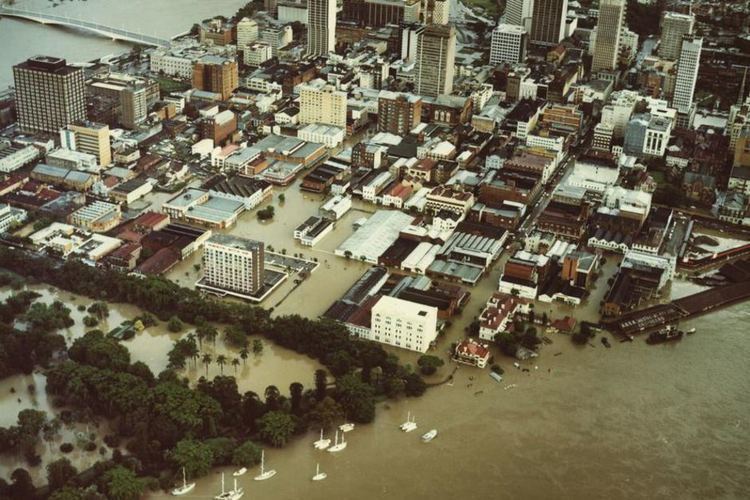
In total, there were 14 fatalities, 300 people injured, 8000 homes destroyed and an estimated A$68 million in damages.
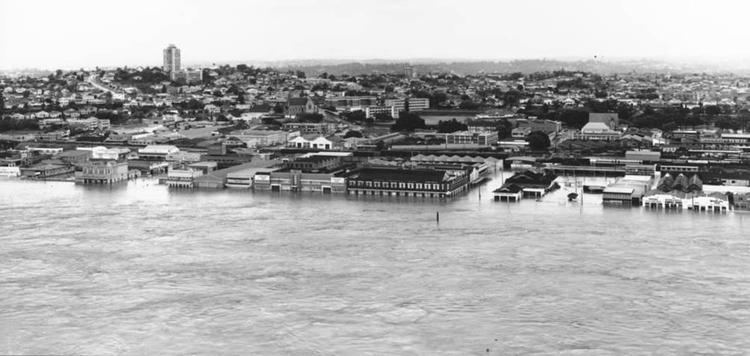
Flood waters in Brisbane
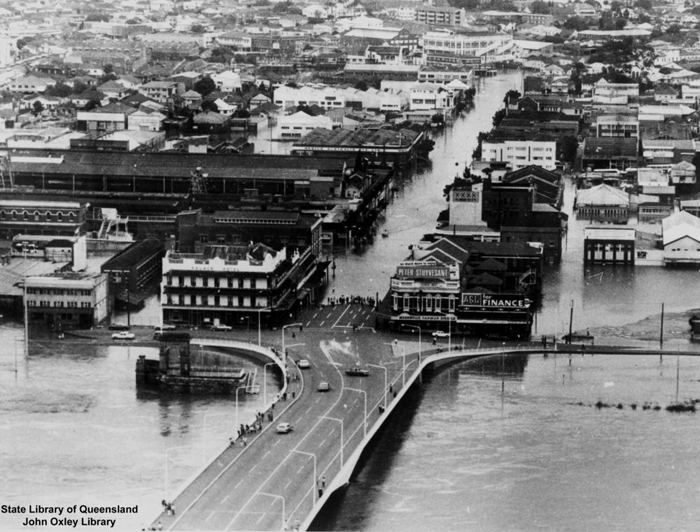
It had been an exceptionally wet spring, and by the end of October most of southern Queensland's river systems were nearing capacity. Cyclone Wanda pushed the systems to the limit, and drew the monsoonal trough southward, providing the additional rainfall to the Brisbane River, Bremer River and Stanley River catchments to produce widespread and severe flooding. In the early morning of 25 January heavy rain began to fall on Brisbane. During a 36-hour period 642 mm of rain fell on the city. These torrential rains were caused by Tropical Cyclone Wanda, a relatively weak cyclone which did not even rate as a category 1 cyclone.
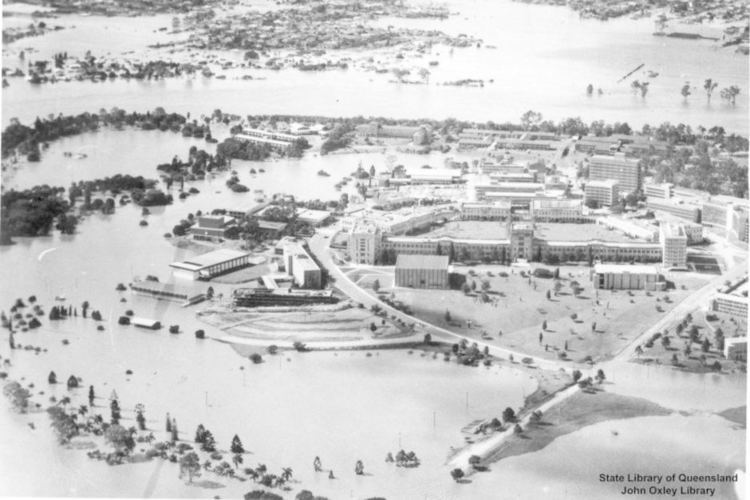
Continual, heavy rain had fallen for three weeks, leading up to the flood, which occurred on Sunday, 27 January 1974, during the Australia Day weekend. The floods peaked at 6.6 metres (22 ft) according to the Port Office gauge at high tide at 2:15 am on 29 January. The peak flooding in the location of the city gauge was approximately 5.5 metres (18 ft).
Damage
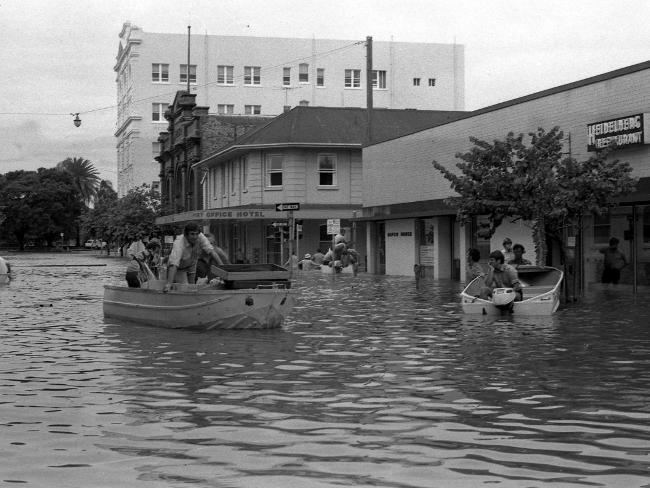
Large areas were inundated, with at least 6,700 homes flooded. Around 13,000 buildings were affected by flooding in some way. Buildings in the Brisbane central business district were particularly hard hit. Damage at the time was estimated at some $200 million. The 67,320 tonne Robert Miller unmoored at Kangaroo Point and became adrift in the river. Two tugboats were needed to control the 15 m high and 239 m long oil tanker. The Robert Miller was the largest ship ever built in Australia at the time. A barge was sunk after becoming caught under and damaging the Centenary Bridge. The most flood affected suburb of Brisbane was Rocklea.
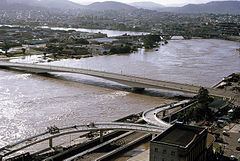
Close to the city Ipswich, 1,800 premises were affected by flooding. The total damage in Brisbane and the surrounding areas was estimated at over A$980 million (1974 values). Insurance claims totalled $328 million. While not as high as the floods in the 1800s this flood is considered to have been worse due to Brisbane's rapidly increasing population at the time.
Many houses were also damaged by land subsidence and land slippage associated with the flooding and high rainfall.
Fatalities
Fourteen people lost their lives, including 10 people who were drowned in the suburbs of Yeronga, Newmarket, St Lucia, and the city of Ipswich upriver and to the west.
The first flood related deaths were at 11:20pm on 24 January. Raymond Roy Davidson (29 years, from Wacol) and Hazel Dulcie Afflick (40 years) were killed in a head-on collision at Wacol, both drivers being blinded by gale force winds and heavy rain.
An army amphibious LARC vehicle was carrying out excavation work at Bellbowrie when the vehicle hit submerged power lines which were still live. Two men, Corporal Neville Hourigan and Captain Ian Kerr of the Australian Army Reserve (then called the Citizens Military Force) were thrown from the vehicle. Bill Lickiss jumped into the water to save them. Hourigan died at the scene and Kerr's body was found after the flood had subsided. Lickiss was awarded the Queen's Gallantry Medal.
A young child, Shane David Patterson (of Yeronga) was swept from his father's arms on a causeway over Oxley Creek in Inala and drowned. An elderly woman was washed away in Ashgrove on 26 January. After the floods receded, the body of a man was found at Milton, and the bodies of three other were found in South Brisbane.
In addition to those that drowned, Robert Adams (aged 56 years) died of a heart attack during an evacuation of a caravan park at Newmarket, and Aiden Sutton, a civilian working with the Queensland Police, aged 50 years, was found dead at home.
Aftermath
After the flood, a series of flood mitigation measures were implemented in Southeast Queensland.
The flood was a defining event for a generation of Brisbane residents with 8,500 homes flooded in Brisbane and Ipswich, 6,000 of these could not be recovered from an inland sea of 200 square kilometres (20,000 ha) formed by the flood waters.
The flood had massive economic implications due to loss of export infrastructure.
